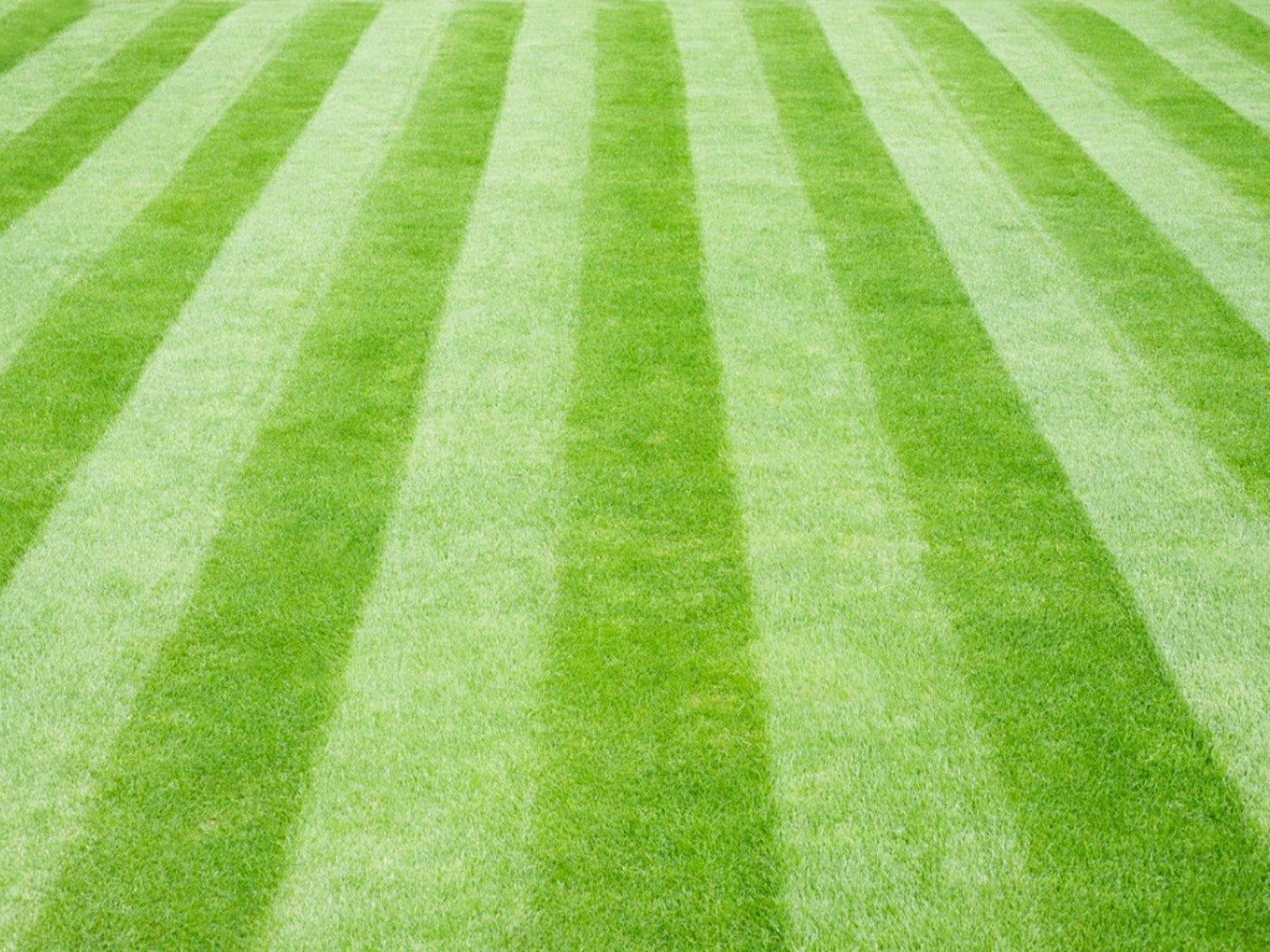Lawn Mowing Design: Learn About Lawn Mowing Patterns


Few things are as satisfying as a pristine, carpet-like, perfect green lawn. You’ve worked hard to grow and maintain green, lush turf, so why not take it to the next level? Make mowing the yard more fun and creative by trying some lawn art patterns. Cutting a lawn in patterns makes the chore go by faster, and it keeps turf healthier and more attractive.
What is Lawn Pattern Landscaping?
A typical, freshly mowed lawn is patterned in back-and-forth stripes or maybe concentric rings. Sometimes, you’ll see diagonal stripes and a grid where the different directions of the mower meet. These are lawn mowing patterns, and they’re the basics.
There are important reasons to change up the pattern in which you mow:
- Going over the same areas again and again with mower wheels can kill or damage grass.
- Grass leans a certain way when you mow it, so continuing in the same pattern every time will emphasize this uneven growth.
- Cutting in the same pattern every time also can create longer stripes or patches of grass.
Ideas for Lawn Mowing Design
Cutting a lawn in patterns that are different each time doesn’t have to be fancy. You can simply change the direction of the concentric rings or change it up between diagonal and straight stripes. These simple changes will improve the health of the lawn and make it look more interesting.
Here are some other ideas for more creative, unique patterns you can mow into the lawn:
- Try mowing in concentric circles outward from trees and beds to create interesting swirling patterns as they overlap.
- Mow straight lines in one direction and then change direction to make lines at 90 degrees to the first set to create a checkerboard pattern.
- Use a similar strategy to make a diamond pattern. Mow in one direction and then in the other direction at an angle of about 45 degrees.
- Make waves in your grass by mowing back and forth in an undulating pattern.
- If you’re really into precision, try the wave pattern but with sharp lines and angles to get a zig-zag. This is one to try after you’ve mastered others. It will look sloppy if you can’t get the lines straight.
Mowing more complicated patterns take some practice, so you might want to experiment in your backyard first. For any pattern, begin by cutting one stripe around all the edges. This will give you spots to turn and will even out any tricky corners before you get down to pattern making.
Gardening tips, videos, info and more delivered right to your inbox!
Sign up for the Gardening Know How newsletter today and receive a free copy of our e-book "How to Grow Delicious Tomatoes".

Mary Ellen Ellis has been gardening for over 20 years. With degrees in Chemistry and Biology, Mary Ellen's specialties are flowers, native plants, and herbs.
-
 8 Noteworthy Native Azaleas Every Gardener Should Know – And Grow!
8 Noteworthy Native Azaleas Every Gardener Should Know – And Grow!Native azaleas offer brilliant blooms in a range of colors and sizes. Here are a few favorites to get inspired and start working on a native shade garden!
-
 Growing Climbing Roses: How To Create Elegant Displays With Maximum Blooms
Growing Climbing Roses: How To Create Elegant Displays With Maximum BloomsMaster the art of growing stunning climbing roses with this essential guide to creating vibrant, fragrant walls and structures all summer long.
-
 Sustainable Turf Species For A Greener Lawn
Sustainable Turf Species For A Greener LawnClick here for some of the most sustainable types of turf grass you can grow for an eco-friendly lawn.
-
 How To Grow A Sustainable Lawn
How To Grow A Sustainable LawnAdjust your thinking about a perfect green lawn and consider more sustainable methods. Click here to learn how.
-
 Will Frost Kill Grass Seed And How To Help New Turf Survive
Will Frost Kill Grass Seed And How To Help New Turf SurviveLearn how to help your newly sown grass survive frost and freezing weather.
-
 Lawn Problems That Aren’t Really Problems
Lawn Problems That Aren’t Really ProblemsYour lawn may not require as much work as you think. Learn which common problems aren’t really problems.
-
 Why A Manual Push Mower Is Good For You And The Environment
Why A Manual Push Mower Is Good For You And The EnvironmentReel mowers are making a comeback, but why? Click here to learn about reel mower pros and cons.
-
 Fertilize Grass In Fall For A Lush Lawn In Spring
Fertilize Grass In Fall For A Lush Lawn In SpringFor everything you need to know about fertilizing your lawn in the fall, click here.
-
 Tips For Mowing Stripes In Lawn
Tips For Mowing Stripes In LawnWouldn’t it be great to have stripes in your lawn like a sports field? Learn how here.
-
 Late Summer Lawn Care Checklist
Late Summer Lawn Care ChecklistPlan to do some late summer care and maintenance of your lawn so it will be healthy and beautiful in the spring. Here are some tips.